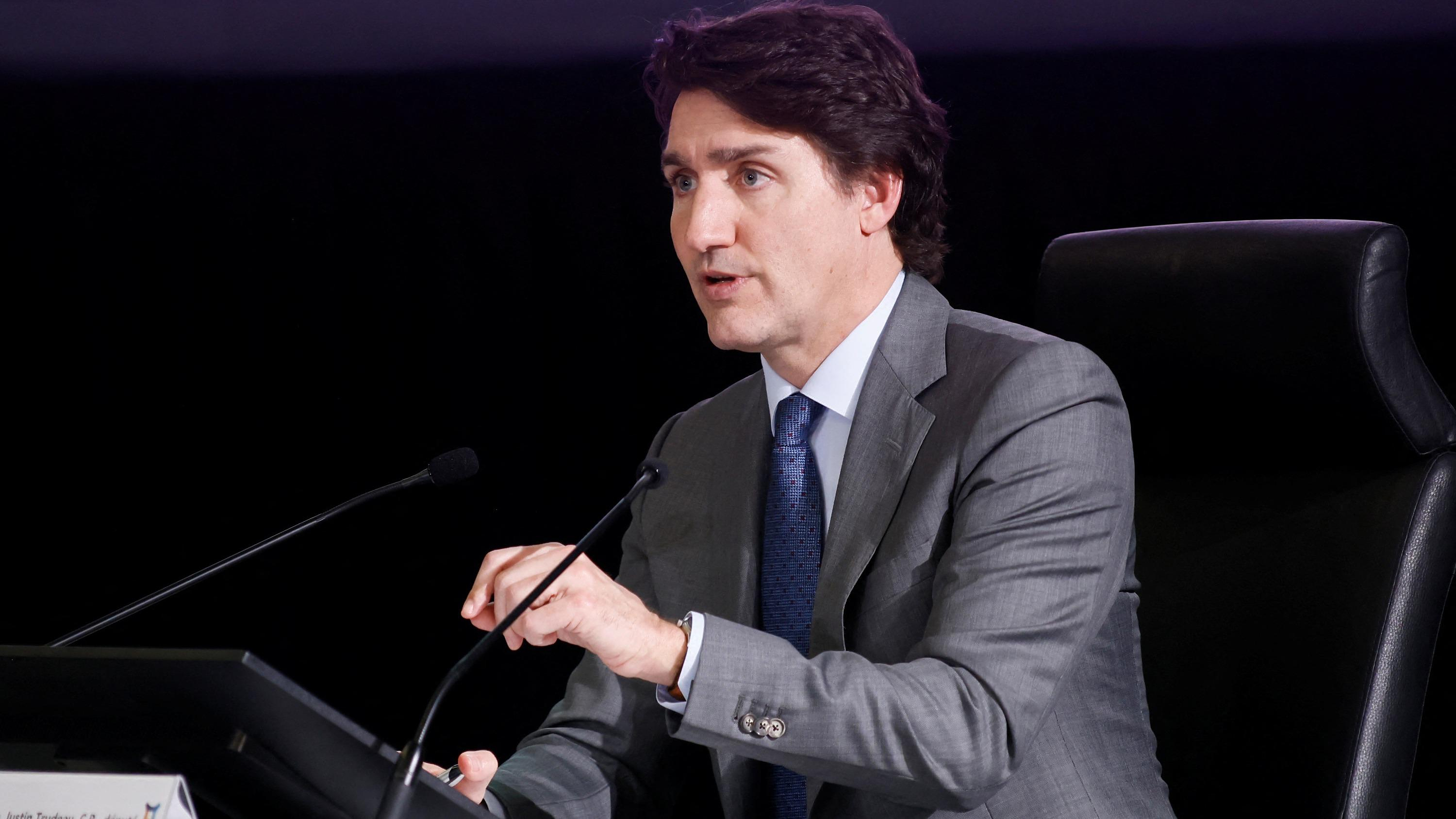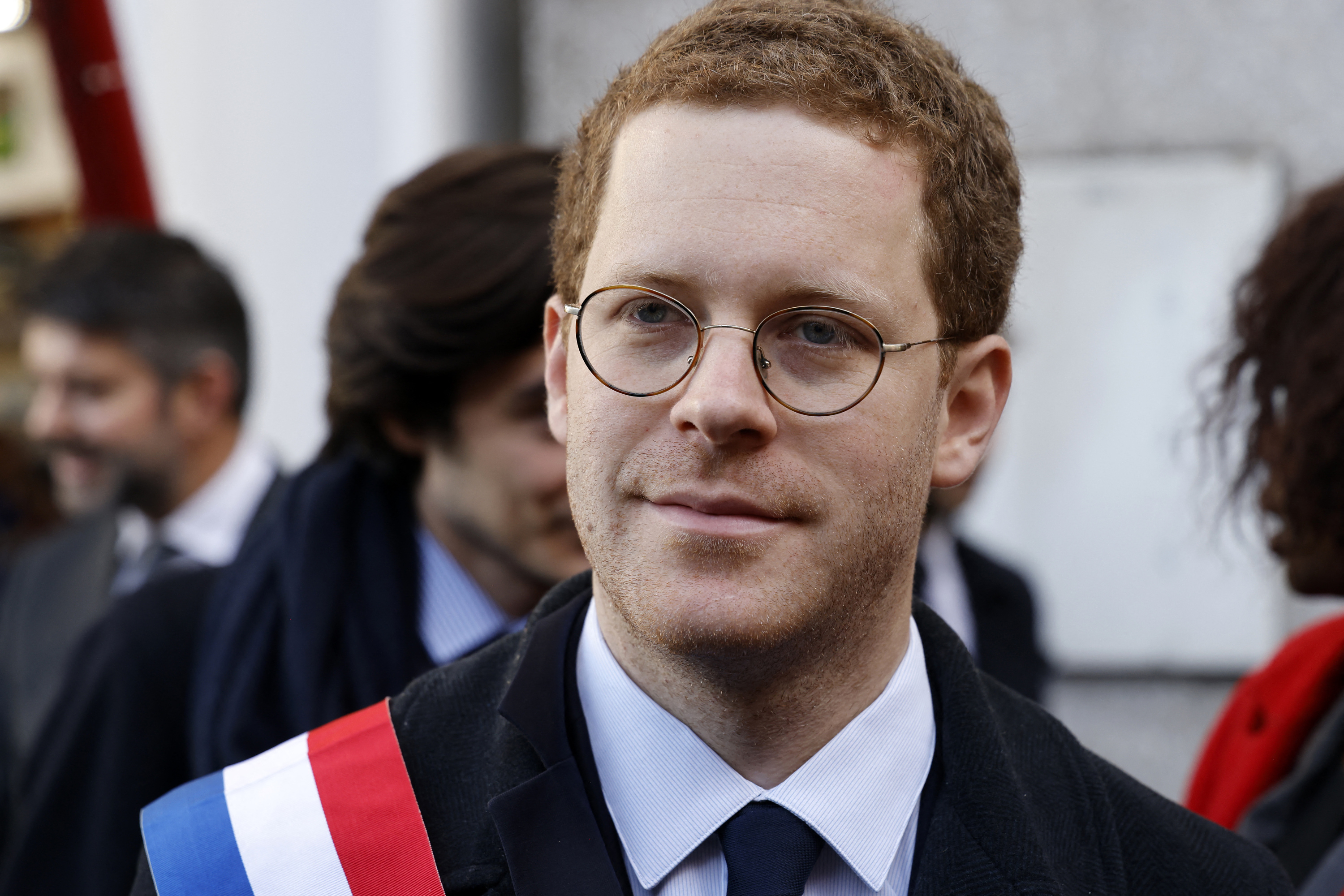The contagious infectious disease was actually considered eradicated in the USA. There had been no cases of polio in the US for almost a decade; in the state of New York it has not been for more than 20 years. But a few months ago, in the summer of 2022, a young man contracted the virus north of the metropolis of New York – now his legs are partially paralyzed.
Since then, polio viruses have been repeatedly detected in the wastewater of several communities in the state and also in the metropolis. "If you have a polio patient with paralysis, you know immediately that there is a bigger problem," said polio expert Diedrich from the Robert Koch Institute (RKI) in Berlin recently. Because only in about one in 200 cases does an infection lead to the irreversible paralysis typical of polio - and that only in unvaccinated people. Such a case can therefore mean hundreds of infected people without symptoms in the region.
Governor Kathy Hochul declared New York a state of emergency. The risk for people who are not vaccinated against polio is high, the governor said. She called on all residents to catch up on immunizations if necessary. "If your child is unvaccinated or not up to date on immunization status, then the risk of a debilitating disease is real," New York City Health Commissioner Mary Bassett said to all parents.
According to the authorities, around 14 percent of children between the ages of six months and five years in the metropolis are not or not fully vaccinated against polio. Routine vaccinations such as polio have been suspended in many countries during the pandemic years. The disease, which is often spread via contaminated hands as a so-called smear infection or via contaminated water, can cause paralysis and lead to death; small children in particular can suffer permanent paralysis.
Before the introduction of vaccinations, there were thousands of sick people and hundreds of deaths every year in Germany alone. The worldwide vaccination campaigns initiated in 1988 have so far saved around 20 million people from paralysis and one and a half million from death, according to the World Health Organization (WHO). In the meantime, however, the vaccination rates are far too low in many places.
It's not just the United States that's affected. In Israel, the pathogen was first detected in a four-year-old child in Jerusalem at the beginning of March. More cases were subsequently reported and poliovirus was found in the sewage of several cities across the country. In London, health authorities became aware in June when polioviruses repeatedly appeared in sewage samples. According to the government, tens of thousands of children are at risk there alone.
The pathogens detected in the three countries are not the wild type of the polio virus, but viruses that go back to the oral vaccination with weakened but living polio pathogens. They can be shed by vaccinated individuals for up to six weeks; Initially, infection via saliva and throat secretions is also possible. According to experts, other countries could also be affected.
Israel uses live oral vaccines (OPVs), but the US and UK do not. Inactivated vaccines (IPV) that do not contain any viable viruses have been in use there for a long time - as in Germany since 1998 exclusively. The pathogens circulating in London and New York were probably first introduced by people who had received the oral vaccination, which is still widespread in their country.
The WHO has now put the USA on the list of countries – currently around 30 – in which vaccine-related polioviruses are spreading. "The United States is taking all appropriate actions to prevent new cases of paralysis," the CDC said. So far there is no cure for polio. In Africa and Asia in particular, oral vaccination with live vaccines is still widely used. The very low risk of a vaccination polio case is accepted in favor of a large-scale immunization of the population.
In the USA, too, after the polio outbreak in New York, the reintroduction of the oral vaccination is now being considered. There is now a new live vaccine with a virus that does not multiply as well and cannot be excreted for as long. "Since the outbreak in New York, we've decided that we need to look at polio again," Oliver Brooks, chair of a CDC working group on the issue, told CNBC. "We just have to do that."
The current cases abroad could become an alarm signal for Germany. Because in this country, babies are vaccinated from the age of two months; According to RKI expert Diedrich, the vaccination rate is around 90 percent nationwide. "That's not enough," she emphasized. The rate is particularly low in Bavaria and Baden-Württemberg, for example. One problem in Germany is that the collective memory has disappeared of the terrible consequences polio had for countless children - and could have again. "This is by no means to be taken lightly."
"Aha! Ten minutes of everyday knowledge" is WELT's knowledge podcast. Every Tuesday and Thursday we answer everyday questions from the field of science. Subscribe to the podcast on Spotify, Apple Podcasts, Deezer, Amazon Music, among others, or directly via RSS feed.

 Rishi Sunak wants a tobacco-free UK
Rishi Sunak wants a tobacco-free UK In Africa, the number of millionaires will boom over the next ten years
In Africa, the number of millionaires will boom over the next ten years Iran's attack on Israel: these false, misleading images spreading on social networks
Iran's attack on Israel: these false, misleading images spreading on social networks Iran-Israel: David Cameron wants the G7 to impose “coordinated sanctions” on Iran
Iran-Israel: David Cameron wants the G7 to impose “coordinated sanctions” on Iran New generation mosquito nets prove much more effective against malaria
New generation mosquito nets prove much more effective against malaria Covid-19: everything you need to know about the new vaccination campaign which is starting
Covid-19: everything you need to know about the new vaccination campaign which is starting The best laptops of the moment boast artificial intelligence
The best laptops of the moment boast artificial intelligence Amazon invests 700 million in robotizing its warehouses in Europe
Amazon invests 700 million in robotizing its warehouses in Europe Boeing tries to defuse the long-haul crisis
Boeing tries to defuse the long-haul crisis Solar panels: French manufacturer Systovi announces the cessation of its activities due to “Chinese dumping”
Solar panels: French manufacturer Systovi announces the cessation of its activities due to “Chinese dumping” Tesla: canceled in court, Musk's huge compensation plan will again be submitted to shareholders
Tesla: canceled in court, Musk's huge compensation plan will again be submitted to shareholders Two, three or a hundred euros: who are the most generous customers with tips?
Two, three or a hundred euros: who are the most generous customers with tips? Bruno Vandelli: one year suspended sentence required against the choreographer for corruption of a minor
Bruno Vandelli: one year suspended sentence required against the choreographer for corruption of a minor Jul fills the Stade de France and the Vélodrome in record time
Jul fills the Stade de France and the Vélodrome in record time Immersion among the companions of the Liberation
Immersion among the companions of the Liberation Provence-Alpes-Côte d’Azur releases several hundred thousand euros for the promotion of the work of Marcel Pagnol
Provence-Alpes-Côte d’Azur releases several hundred thousand euros for the promotion of the work of Marcel Pagnol Skoda Kodiaq 2024: a 'beast' plug-in hybrid SUV
Skoda Kodiaq 2024: a 'beast' plug-in hybrid SUV Tesla launches a new Model Y with 600 km of autonomy at a "more accessible price"
Tesla launches a new Model Y with 600 km of autonomy at a "more accessible price" The 10 best-selling cars in March 2024 in Spain: sales fall due to Easter
The 10 best-selling cars in March 2024 in Spain: sales fall due to Easter A private jet company buys more than 100 flying cars
A private jet company buys more than 100 flying cars This is how housing prices have changed in Spain in the last decade
This is how housing prices have changed in Spain in the last decade The home mortgage firm drops 10% in January and interest soars to 3.46%
The home mortgage firm drops 10% in January and interest soars to 3.46% The jewel of the Rocío de Nagüeles urbanization: a dream villa in Marbella
The jewel of the Rocío de Nagüeles urbanization: a dream villa in Marbella Rental prices grow by 7.3% in February: where does it go up and where does it go down?
Rental prices grow by 7.3% in February: where does it go up and where does it go down? Europeans: the schedule of debates to follow between now and June 9
Europeans: the schedule of debates to follow between now and June 9 Europeans: “In France, there is a left and there is a right,” assures Bellamy
Europeans: “In France, there is a left and there is a right,” assures Bellamy During the night of the economy, the right points out the budgetary flaws of the macronie
During the night of the economy, the right points out the budgetary flaws of the macronie Europeans: Glucksmann denounces “Emmanuel Macron’s failure” in the face of Bardella’s success
Europeans: Glucksmann denounces “Emmanuel Macron’s failure” in the face of Bardella’s success These French cities that will boycott the World Cup in Qatar
These French cities that will boycott the World Cup in Qatar Champions League: “It’s painful, but we have to learn,” says Arteta
Champions League: “It’s painful, but we have to learn,” says Arteta Champions League: “Madrid never dies”, says Ancelotti
Champions League: “Madrid never dies”, says Ancelotti Champions League: Manchester City played “exceptionally”, according to Guardiola
Champions League: Manchester City played “exceptionally”, according to Guardiola Champions League: video summary of the Manchester City-Real Madrid clash
Champions League: video summary of the Manchester City-Real Madrid clash


















